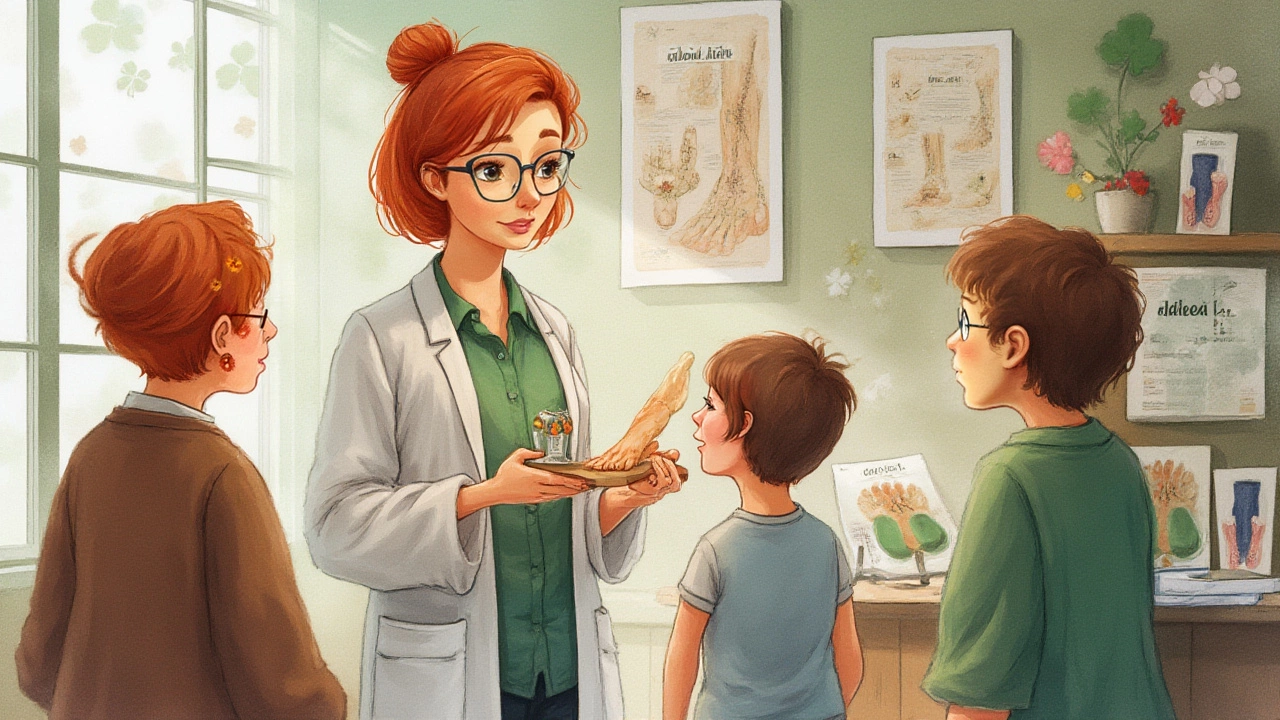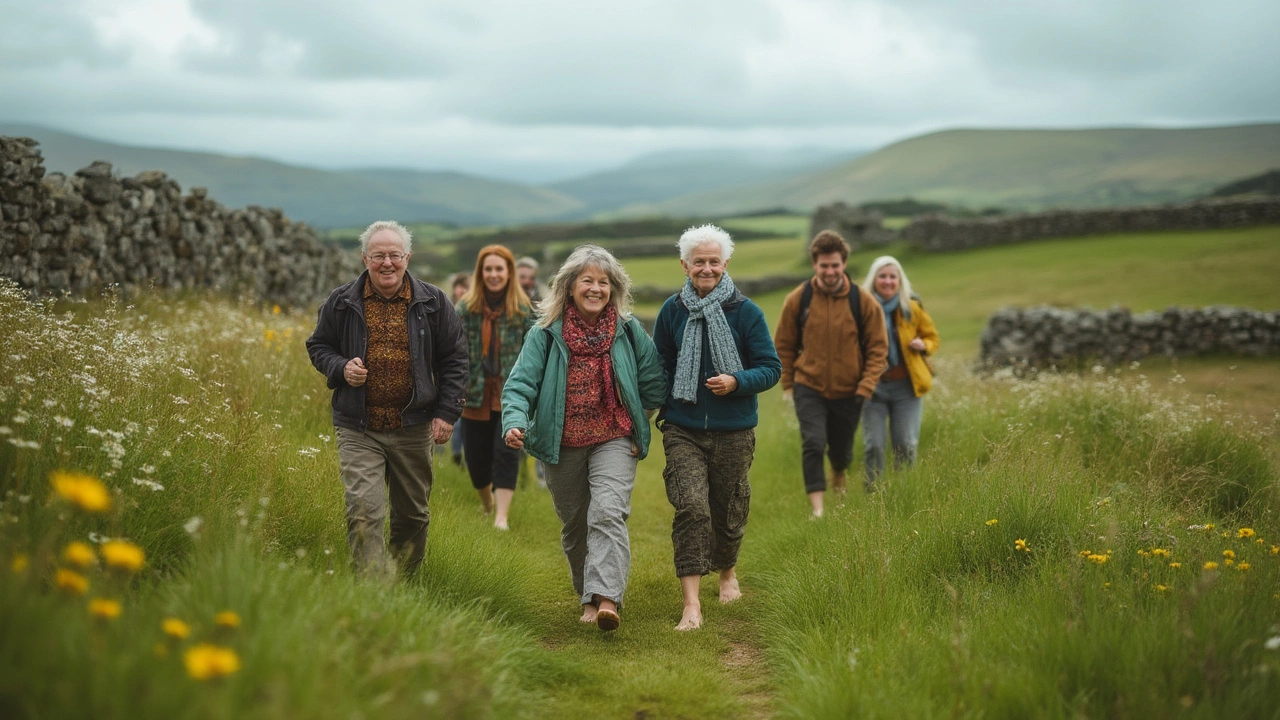Picture kicking off your shoes at the edge of Inch beach after a long drive, toes curling into cool, damp sand with salty air everywhere. If you’ve ever wondered what foot specialists in Ireland think about going barefoot, you’re not alone. The Irish landscape, a patchwork of glens, lakes, city pavements and rough pastures, invites the idea—but also raises specific local questions about health and safety.
What Podiatrists Actually Say About Barefoot Walking in Ireland
If you’ve ever been in the waiting room of a Dublin chiropodist—maybe clutching a pair of worn-out trainers or battling stubborn heel pain—you’ll know: Irish podiatrists don't all agree about the joys of barefoot walking. People love the idea, sure, but the answer is rarely black or white. In Ireland, our quirky weather, mix of urban grit, and old stone farmyards require us to think twice.
Podiatrists here are fully clued in on the growing barefoot trend. There are posters for ‘natural running’ at clinics in Cork, and patients asking if minimalist shoes are the cure for bunions on Meath Street or in Galway retail parks. Many Irish foot specialists recognise barefoot walking can help strengthen foot muscles and improve balance. This is especially true for children—lots of paediatric podiatrists will tell parents to let little ones occasionally toddle around barefoot in the house or on safe grass like the kind you might find in St Stephen’s Green.
But ask about barefoot walking outdoors, and the advice quickly turns cautious. Dr. Eoin Gaffney, a podiatrist with over 20 years’ experience in Leinster, says, “People underestimate the risk of sharp debris in Irish parks or even a hidden shard of glass by the Liffey. We live in an old country—broken shells, thorns, and bits of metal are not rare.”
Irish climate plays a role too. Ever tried barefoot on a wet footpath in December? It’s socks and boots season for good reason. Foot wounds and fungal infections are more likely when the weather’s wet and cold. And it’s not just city life—farmers in rural Mayo are sometimes seen with cracked heels or stubborn fungal infections after too much time barefoot about the yard, especially after storms or floods.
Podiatrists in Ireland also worry about conditions like diabetes and circulation problems. For anyone with numbness or loss of sensation, a cut or scrape can quickly turn nasty without being noticed. Irish health guidelines urge these groups to keep their feet well protected. So while walking barefoot in your own (well-swept) home or a private, safe garden is mostly fine, public places get a big red flag from most Irish specialists.

Local Terrain, Irish Habits, and Where It's (Maybe) Safe to Walk Barefoot
It’s true that countries with hot, sandy beaches or consistently warm climates—think Australia or parts of the US—have a long barefoot tradition. Here in Ireland though, our setting shapes the barefoot debate in uniquely Irish ways. The main challenge? Unpredictable terrain and rough, sometimes hazardous surfaces.
Start with the city. Dublin, Cork, Galway—our streets collect everything from old chewing gum to broken glass and stones. Even riverside parks like the Phoenix Park or St Anne’s can surprise you with hidden brambles. Local podiatrists often treat cuts, stubbed toes, and odd infections picked up by those who went barefoot in public, thinking it would be harmless. Public toilets in Irish campsites or holiday parks? Always wear flip-flops, everyone says—foot fungus is more common than you’d expect, especially by the pool at Westport House during the summer rush.
The Irish countryside isn’t always a foot-friendly paradise either. Our fields are scattered with nettles, thistles, sharp pebbles, and muddy patches. Animal droppings (cows, foxes, even the odd lost sheep) mean there’s always a risk of nasty bacteria. Even the prettiest woodland walks, like Glendalough’s lakeshore paths, are full of pine needles and sharp gravel.
So where can you safely kick off your shoes? Short answer: your own home or private (regularly mowed, checked) garden. Some newer Irish playgrounds have soft poured surfaces, so playtime in socks for toddlers might be okay—always check for splinters or sharp objects first. Seaside spots? Early mornings on clean stretches like Dollymount Strand can be safer, but never drop your guard—tidal shifts and litter are a fact. Irish water quality is quite good, according to the EPA’s latest report, but after high rainfall, puddles and standing water are never risk-free.
Here’s how Irish podiatrists frame the choice: weigh the joy of natural walking against the risks, especially after local festivals or events. During the International Oyster Festival in Galway, it’s not unusual for pubs and park lands to end up littered with shells and broken glass. After any big Bank Holiday weekend at Bray or Salthill, a quick scan underfoot is more important than ever.
- Check the surface: Only walk barefoot on areas you’ve checked for hidden hazards. Newly rolled lawns or patios are safer. Avoid gravel, sand after festivals, or older beaches after storms.
- Keep feet clean and dry: After any barefoot walk—outdoors or in—wash your feet well and dry them between the toes. Irish humidity can make athlete’s foot flare up faster than you’d think.
- Beware of animal waste: It can carry worms and bacteria not just for kids or pets, but adults too.
- Cold ground is risky: Even in summer, Irish ground temps can drop. Cold leads to vasoconstriction, less blood flow, and more risk for chilblains (very common among GAA players training on winter fields).
- Diabetics, beware: Podia Ireland and the HSE both point out the extra danger for those with neuropathy or compromised blood flow. Always wear shoes outdoors if you’re in this group.
Here’s a quick snapshot comparing common barefoot hazards in Irish and other climates:
| Hazard | Common in Ireland? | Example / Note |
|---|---|---|
| Sharp stones/glass | Yes | City streets, after festivals |
| Hot pavement burns | Rare | Usually not a worry (even in a heatwave!) |
| Ankle sprains on uneven ground | Yes | Fields, hiking trails |
| Stings from insects | Sometimes | Wasps/bees in gardens, rare scorpions (not here!) |
| Fungal/bacterial infection risk | High | Wet, muddy conditions |
| Parasitic worms | Occasional | Animal waste in country parks |
So the verdict: walking barefoot in Ireland needs a bit of planning and common sense, a regular foot check, and (if you ask my wife Imogen) a backup pair of thick socks in the car boot—just in case.

Irish Barefoot Walking: Health Benefits, Urban Legends, and Local Tips
Barefoot walking has a bit of a mystical charm in Irish storytelling. From Celtic warriors running over bogs to schoolkids dashing to the Forty Foot for a dip, barefoot adventures aren’t new. But what about the science?
Irish podiatrists sometimes mention these possible upsides to safe barefoot walking:
- Better foot muscle strength: Shoes can weaken intrinsic muscles. Going barefoot—especially indoors or on safe, soft grass—can help build strength and flexibility.
- Natural balance training: Barefoot walking challenges your brain’s sense of balance. This can help older adults reduce fall risk, especially in safe garden settings. Small Irish studies, like one done by UCD in 2023, found improved proprioception after eight weeks of gentle barefoot exercise indoors.
- Potential back pain relief: Anecdotally, Irish physiotherapists working in clinics from Galway to Wexford report some patients seeing better posture and reduced lower back pain with controlled, mindful barefoot movement—never on unsafe ground, though.
- Sensory grounding: There’s a growing interest in ‘earthing’ or ‘grounding’—the idea that direct contact with earth surfaces can reduce stress or inflammation. There’s no solid proof yet, but plenty of Irish mindfulness retreats (like those in West Cork) have begun adding grounding walks to their programs.
Now, before you toss your trainers out: everything depends on the conditions. If you have flat feet, bunions, plantar fasciitis, or a bad back, check with a podiatrist before starting a barefoot routine, even at home. This is especially real for people with underlying health problems—which is, let’s be honest, half the folks who actually visit foot clinics in Ireland after a long winter.
There are quite a few urban legends around barefoot walking in Ireland. Some swear going barefoot will cure all foot pain, but there’s no miracle here. Others worry that a single barefoot walk in the Phoenix Park will turn their soles into rough calluses. Truth is, occasional barefoot time, especially for kids in safe spaces, rarely causes problems. Regular barefoot walking should always be built up slowly—a few minutes in the back garden, not half a day on the driveway or along the Grand Canal.
Cork’s annual barefoot festival (yes, it’s real, held in Fitzgerald’s Park) celebrates ‘foot freedom’ each July with supervised grassy walks, yoga, and local podiatrists on hand for advice—which is telling. The professionals know there’s a time and a place for shoe-free living, but they’re ready for emergencies too.
- Check your feet daily: Look for cuts, redness, or swelling. Diabetes Ireland recommends this, especially for anyone with neuropathy.
- Use supportive footwear for longer walks: Brands like Dubarry and Ecco, found in shops around Grafton Street, offer Irish-adapted shoe fits if you want flexible support.
- Know your surfaces: Wooden decks, sandy beaches, soft lawns = safer. Broken tarmac, stones, woodland trails = risky.
- Apply moisturiser: The Irish climate can crack soles quickly in winter. Most podiatrists recommend urea-based creams, available in every pharmacy from Drogheda to Tralee.
The best tip? Try barefoot living mindfully, start slow, and trust local advice. Checking in with a podiatrist is nothing to be embarrassed about. Ask what they’d do for their own mammy or kids. Barefoot or not, healthy feet mean more fun exploring all the wild, green places Ireland has to offer. So next time you’re tempted to leave your trainers by the back door, make it a conscious, informed choice. And always keep an eye out—Irish ground has a few surprises waiting for your toes.
